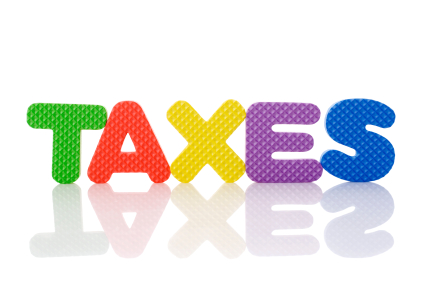- Essential Bookkeeping Habits For Audit Ready Books in Canada
- Self Employed Tax Deductions
- How Are Sole Proprietors Taxed
How Are Sole Proprietors Taxed?
How To Calculate Your Marginal Tax Rate
By L.Kenway BComm CPB Retired
This is the year you get all your ducks in a row! Start by starting.
Edited May 13, 2024 | Updated April 4, 2024 | Originally published on Bookkeeping-Essentials.com in April 2009.
WHAT'S IN THIS ARTICLE
How you are taxed | Pay Less Tax | 5 Steps | Tax System in Beer | Marginal Tax Rate | Dividend Gross-Up Rates
Highlights Of This Post
- How sole proprietors are taxed in Canada
- These 2 compliance habits are the best way to pay less tax
- 5 steps to calculating self-employed income tax payable
- The tax system in beer
- How to calculate your marginal tax rate
- How to calculate your average tax rate
- Example of what tax planning you can do with your marginal and average tax rate
How are sole proprietors taxed in Canada?
As an unincorporated business owner, you are taxed on your profit not your gross business income nor how much cash you withdrew from your business.
How Are Sole Proprietors Taxed In Canada?
Gross Business Income*
(is not taxed)
- Allowable Business Expenses**
(tax deductions)
= Profit (is taxed)
*it includes your cash sales and barter sales
**excludes sole proprietor draws
This means there is a tax planning opportunity here if you learn what business expenses in Canada are legally deductible to reduce your gross income.
The sidebar formula could also be stated as: Taxable Income = Revenue - Allowable Business Expenses.
Owner's drawings are reported in the equity section on page 5 Part 9 Line 9932 of Form T2125; along with owner's contributions and business liabilities. These numbers are not part of your tax calculation.
Self employed taxes, when you are unincorporated, are an integral part of your personal T1 tax return.
Your self-employed business profit is reported on Form T2125 and then carried forward to Page 3 Line 13500 of your T1 Income Tax and Benefit Return. That's why the tax deduction checkpoints I'm presenting on this compliance site are so important.
These 2 Rules Are The Best Way to Pay Less Tax
The best way for sole proprietors to pay less tax in Canada and not run into trouble with the Canada Revenue Agency (CRA) is to make it a habit to adhere to the following two rules:
# 1 Rule - If you want to be Audit Ready
No receipt or source document?
Say NO to claiming the deduction!
# 2 Rule - Know the rules. Understand not every business expense is deductible.
If you want to be Audit Ready
Only deduct what is legally allowed.
See how your business tax deductions affect your personal taxes:
5 Steps to Calculating your Self-Employed Income Tax Payable
 There are 5 steps to calculating your income tax payable to the government.
There are 5 steps to calculating your income tax payable to the government.Step One - All your world wide income is reported including your taxable net profit
Step One - All your world wide income is reported including your taxable net profit
All your world wide income is reported on page 3 of your T1 Income Tax and Benefit Return including your profit from Form T2125. See line 15000 on your tax return.
Step Two - Your net income is calculated
Step Two - Your net income is calculated
Your net income is calculated on page 4 of the T1 and is used to determine your eligibility for social benefits and tax credits you are entitled to. You must file a tax return to apply for and / or receive some of the benefits. GST/HST credit and the Canada child tax benefit come immediately to mind as do some reductions in provincial health premiums. See line 23600 on your tax return.
Step Three - Your taxable income is calculated
Step Three - Your taxable income is calculated
Your taxable income is calculated on page 5 of the T1. This amount is used to assess your income tax payable. See line 26000 on your tax return.
Step Four - Your federal and provincial taxes are calculated
Step Four - Your federal and provincial taxes are calculated
Your federal and provincial taxes are calculated on separate schedules after non-refundable tax credits (page 5 and 6) are taken into consideration. The credits are called non-refundable because they reduce the amount of tax owed, but only to the amount of tax owing. Any excess is not refundable. The tax payable amounts calculated are carried forward to page 7 of your T1.
Step Five - The tax payable is determined
Step Five - The tax payable is determined
The tax payable shows on line 43500 on page 7 of your T1. It was calculated in the previous step. It is then adjusted on page 8 for tax installments, tax deductions, and refundable tax credits to determine your final amount owing (line 48500) or the refund you are due (line 48400). See line 167 on your tax return for your refund or balance owing.
Step Six - Sign your tax return with ink or electronically
Step Six - Sign your tax return with ink or electronically
Signing your tax return is not something to do lightly.
Knowing the rules is important because willful ignorance is not a defense. The onus is on the taxpayer to provide the burden of proof for all self employed tax deductions submitted on your tax return.
The Tax System in Beer
If this seems all a bit complicated, perhaps this humorous explanation on You Tube using beer will help ... at the very least it should make you smile ... The Tax System in Beer.
In Canada we have a progressive tax system based on individual incomes not family incomes. A low rate is imposed on lower incomes and a higher rate is imposed on higher incomes. Currently (2024 and 2023 in brackets) there are five different federal tax brackets.
- 15% - taxable income up to $55,867 ($53,359)
- 20.5% - taxable income between $55,867 and $111,733 ($53,359 and $106,717)
- 26% - taxable income between $111,733 and $173,205 ($106,717 and $165,430)
- 29% - taxable income between $173,205 and $246,752 ($165,430 and $235,675)
- 33% - taxable income exceeding $$246,752 ($235,675)
The federal government has their tax schedule shown above and each province / territory has one as well. So it's tough to know what your combined marginal tax rate is, which is the highest rate at which your last dollar of income is taxed.
If you are in the lowest tax bracket, your income is taxed just on one rate. If you are in the second to fifth tax bracket, you pay tax at different rates.
Capital gains and dividend income attract different marginal tax rates than other income because of special tax rules. Only 50% of capital gains are included in taxable income while dividends are currently included in taxable income at 115% or 138% with an offsetting deduction from taxes payable.
Dividend Gross Up Rates
Eligible (Public / Non-CCPS)Dividend Gross-Up
- 2006 to 2009 - 45%
- 2010 - 44%
- 2011 - 41%
- 2012 forward - 38%
Ineligible (Private / CCPCs) Dividend Gross-Up
- 2006 to 2013 - 25%
- 2014 to 2015 - 18%
- 2016 to 2017 - 17%
- 2018 - 16%
- 2019 forward - 15%
Learn More << How To Calculate Dividend Gross-Up And Tax Credit>>
Have you ever wanted to calculate your marginal tax rate but don't know how? Here's how to do it.
Get your latest tax return filed with the CRA. Find the Part 5 Federal Tax (formerly Schedule 1) on page 5 of 8 of your T1 and also Your Provincial Tax Schedule in your tax return package. In BC, it's form BC428 British Columbia Tax. In Alberta, it's form AB428 Alberta Tax and Credits. Each province has their own tax schedule. The form will start with two letters for your province / territory followed by 428.
You will see the five federal tax rates imposed on various levels of incomes. For the 2023 tax year, they are 15%, 20.5%, 26%, 29% and 33%. Each province and territory set their own rates. Alberta's 2023 rates are 10%, 12%, 13%, 14% and 15%. while B.C.'s 2023 rates are 5.06%, 7.7%, 10.5%, 12.29%, 14.7%, 16.8% and 20.5%.
Take your taxable income reported on line 26000 of your T1 return and pick the highest tax rate you paid tax on. If you are looking at your filed return, it should be easy to spot as you will see a completed calculation in one of the five columns.
Add the federal rate from Part 5 and the provincial rate from your provincial tax XX423 schedule (where XX is your province) to get your marginal tax rate.
So if you had taxable income of $100,000 in the province of Alberta, your marginal tax rate would be 20.5% plus 10% = 30.5%. That means on your last dollar earned, you paid 31 cents in tax. Your marginal rate is the highest rate your income is taxed.
But here's the thing. Your marginal tax rate is not your actual tax liability.
To calculate that, you want your average tax rate. Your average tax rate will be lower than your marginal tax rate.
The easiest way to calculate your average tax rate is to take your tax payable from line 43500 of your T1 (page 7). Divide it by your taxable income on line 26000 of your T1 (page 5).
My favorite tax site has an average tax rate table for every province or territory at varying levels of employment income, showing average tax rates for each. You can also find marginal tax rates by following the links to your province or Canada.
So why do you want to know these rates?
Well, you can calculate what if scenarios (instead of letting the computer software do it for you). Suppose you couldn't decide whether to purchase a $1000 RRSP or donate $1000 to a charity.
With the above information, we can figure out which gives you the most tax savings. Using the $100,000 taxable income again, here's how:
(1) RRSP contribution of $1000 x marginal tax rate of 20.5% = tax savings of $205 plus future interest/dividends are sheltered.
(2) Charitable contribution of $1000 ... 200 x 15% = $30 + ($1000-$200) x 29% = $232 = tax savings of $262
That's just one example of what you can do when you know your marginal tax rate.
If you wanted to decided between an RRSP contribution or a TFSA contribution, Ativa has a great calculator to help you decide. If you withdraw your RRSP contribution in the same tax bracket as you made the contribution, there is no tax savings between the TFSA and the RRSP.
